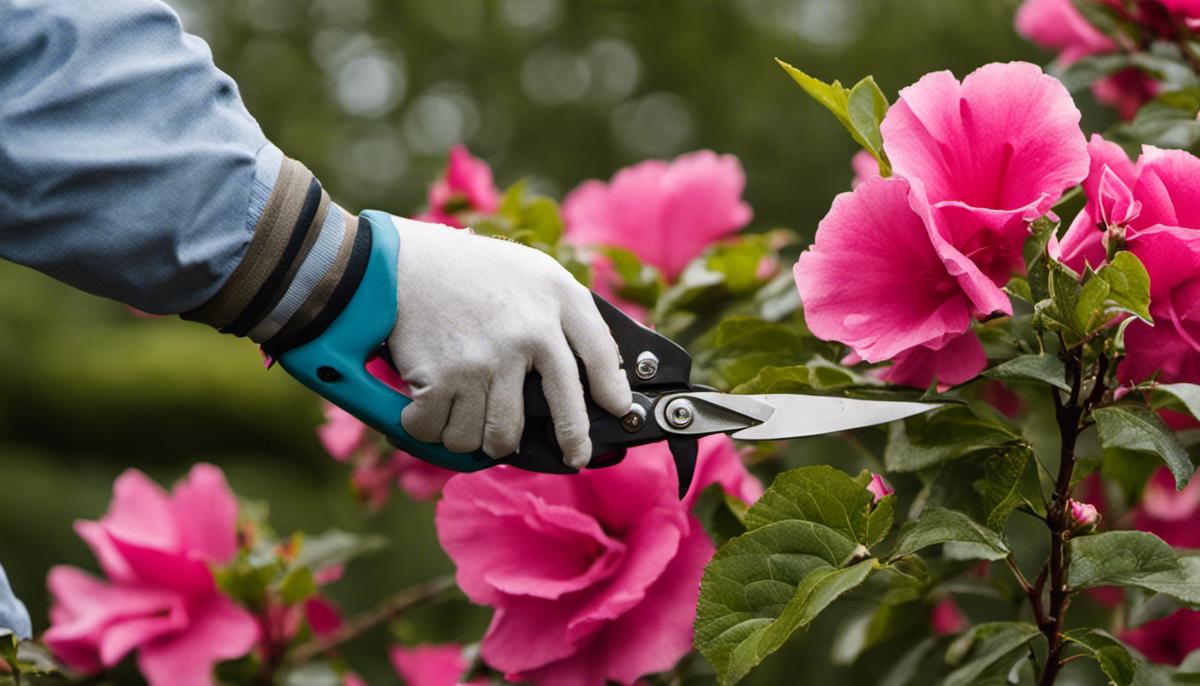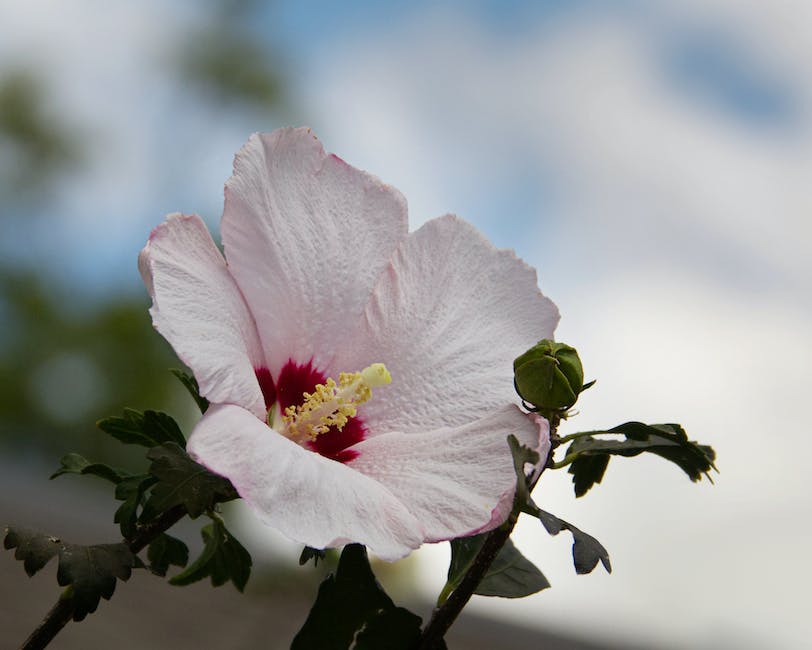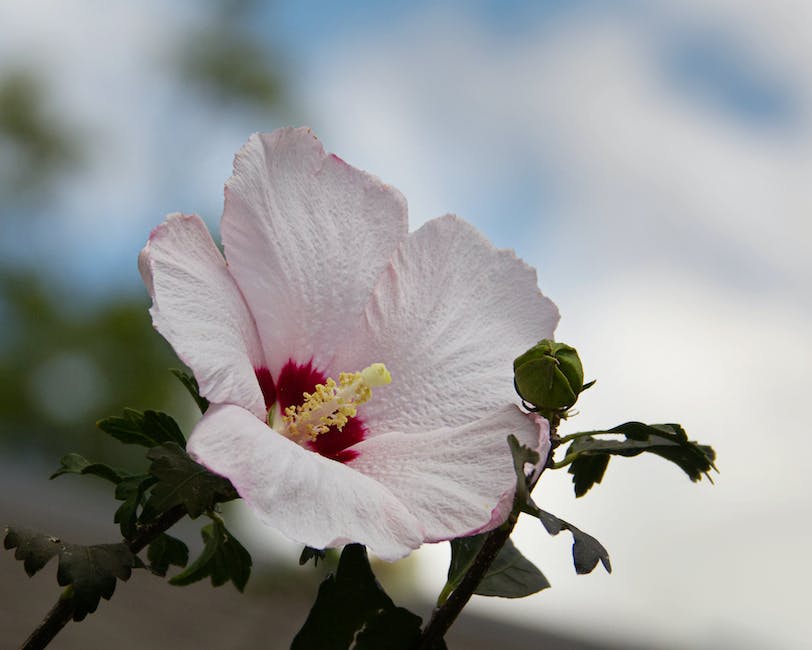Efficient Pruning of Rose of Sharon: A Guide

Pruning, a vital part of plant care, plays an integral role in shaping your Rose of Sharon and ensuring its optimal growth and bloom. Knowing when to prune and which techniques and equipment to use can significantly affect the health and aesthetic of your plant. This discussion will delve into the best time to prune your Rose of Sharon, typically in late winter or early spring when the plant is dormant. Additionally, it will shed light on various pruning methods, like thinning out old branches and the head back method, as well as the appropriate tools such as pruning shears.
Understanding the Right Pruning Time
Timing is Everything: The Best Time to Prune Rose of Sharon
The art of horticulture offers a therapeutic blend of patience, precision, and common sense. The Rose of Sharon, one of the most captivating characters in our gardens, demands the same attention. Renowned for its late summer blooms and brilliant display of colors, maintenance of this ornamental favorite is not just about water and sunlight – it’s about understanding and implementing the right pruning cycle.
Pruning Rose of Sharon, a member of the Hibiscus family (Hibiscus syriacus), encourages overall health by deterring pests, removing dead wood, and promoting air circulation. More importantly, it stimulates a rejoicing of bountiful and vibrant blossoms.
So, when is the optimal time for this beneficial botanical grooming?
Nurturing your Rose of Sharon means getting the timing right. Remember that it’s a hardy deciduous shrub that blossoms on new growth, which means it’s alright if it doesn’t keep last year’s branches. This flowering darling should be pruned late in winter or early spring, specifically between February and April depending on the hardiness zone.
Pruning at these times ensures that all dead, broken, or damaged branches are identified and trimmed before the onset of the growing season. Moreover, because this plant flowers on new wood, any late winter or early spring trim will not hinder this year’s blooming, but rather will be a beacon for a cascade of new blooms in that same year.
Pruning later in spring or during the summer could inadvertently cut off the tips, where buds have already formed. Consequently, this could result in fewer flowers. The conclusion is simple – early pruning reigns supreme for the Rose of Sharon!
The task itself is broken down into cutting the bush back by a third or half its size, trimming off dead or damaged wood, and removing suckering shoots around the base to improve energy efficiency. Be sure to use sharp pruning shears for clear and smooth cuts.
Keep in mind, there’s no hard and fast rule on how drastically you should prune. Some gardeners prefer a massive 2-foot tall shrub, while others opt for a 10-foot tall dramatic specimen. It’s up to the artist in you.
Embrace gardening as an ever-evolving journey of joy and learning – much like life itself. Value each season, each bloom, each cut, and harboring the understanding that the more effort put in, the more beauty unfolds. So, make sure your pruning shears are ready for the end of winter – and let your Rose of Sharon bloom in all its glory!

Photo by paster9611 on Unsplash
Pruning Techniques and Equipment
Pruning tool choices are paramount when it comes to the optimal care of a Rose of Sharon. The right tools don’t just facilitate a smoother pruning experience, but also ensure a minimized risk of damage to the plant. The trusty pruning shears are a basic must-have. Look for a pair with sharp, stainless steel blades to ensure clean cuts that minimize the chances of disease. For those thicker branches, a hand saw is the tool for the job. It should be sharp, comfortable to hold and easy to maneuver to ensure precision in every cut.
For those hard-to-reach or overgrown branches, a longer tool might be required. Telescoping pruners are ideal for this reason. Being swift and lightweight, they assist the gardener in reaching higher branches without needing a ladder.
It’s also beneficial to have some disinfectant like rubbing alcohol handy. This is used in between cuts to sterilize your tools, preventing the potential spread of disease. While one may find it a tedious step, it’s truly one of the best precautions one can take to ensure the continued health of the plant.
Behind every good tool is the proper technique, and the Rose of Sharon requires mindful handling. When pruning, the aim should be a vase-like shape, trimming the plant from its base upwards. Young branches should be reduced to three to five primary stems. This encourages a bushier growth pattern.
Sharp, angled cuts above outward-facing buds are preferable. This promotes growth away from the center of the shrub, improving air circulation, and avoiding overcrowding. Older or damaged stems should be cut back to the ground level. Small, twiggy growth on the plant should also be removed to enhance the plant’s overall vigour and health.
Pruning isn’t simply a chore completed annually. Regular maintenance throughout the year; deadheading spent flowers or snipping off unhealthy looking leaves keeps the Rose of Sharon in glowing health. Doing so allows the energy of the plant to be utilized for vibrant blooms and healthy growth, presenting a spectacle of beauty for any garden-lover.
In essence, the Rose of Sharon is a testament to patience, precision, and passion. Incorporating the right tools and techniques is crucial in the pursuit of a thriving, blooming garden that brightens up any space it graces. Gardening is a meaningful journey that rewards the gardener with beauty, serenity, and perhaps the most prized gift of all – knowledge. Prune wisely, prune well, and watch beauty bloom!

Maintaining Health Post-Pruning
Nurturing the Rose of Sharon Post-Pruning: Essential Care Tips
Encouraging our cherished Rose of Sharon to flourish beyond the pruning stage is a tranquil and reward-filled journey that requires diligent care and thoughtfulness. The road to maintaining our plant’s health post-pruning is walked by means of attentive watering, feeding, and monitoring. Let’s dive into a more detailed exploration of these crucial steps.
Watering is a pivotal aspect of our plant’s prosperity following a pruning session. The Rose of Sharon enjoys a good soak, especially during the hot summer months and immediately after pruning. Implement a deep watering technique, generously saturating your plant to facilitate a steady, luxuriant growth. However, caution is warranted as the line between nurturing and water-logging can be thinly drawn. The objective is to maintain dampness around the root region without encouraging a soggy environment, which could lead to root rot.
Feeding our lovely flora is equally imperative. A balanced, slow-release fertilizer introduced in early spring can serve as a useful tool in your caring arsenal. An advantageous pick for the Rose of Sharon might involve a blend with a higher phosphorus value; the component promotes flowering and aids in the plant’s recovery post-pruning. Remember, feeding should be slowed or withheld during the colder months when our Rose is dormant to prevent unnecessary stress.
Mulching not only boosts the aesthetic appeal of our garden but also indirectly serves the well-being of our Rose of Sharon post-pruning. A good layer of organic mulch around the base contributes to maintaining soil moisture, regulating temperature, and adding vital nutrients to the soil over time. The added bonus? Mulching aids in blocking weed development, reducing the competition for resources needed by our beloved flora.
Routine monitoring, like constant silent dialogue with our Rose of Sharon, manifests in noticing changes, whether it’s the yellowing of leaves or an unusual slack in growth. Such observations often signify that the plant is facing stress or battling disease. Attending to these issues early can alleviate the damage and improve the plant’s chances of a swift recovery post-pruning.
Lastly, extending adequate space for your Rose of Sharon to bask in full sun will significantly contribute to maintaining its health and promoting prolific blooms. Ensure the plants are not crowded and get around six hours of direct sunlight each day.
Awakening the magic that is the Rose of Sharon post-pruning is a process of cherishing elements often overlooked. It urges us to blend patience with knowledge, fostering a bond with the natural realm around us. As we proceed down the path of care and maintenance, the resounding sounds of thriving gardens echo reminders of our commitment, borne not from obligation, but a profound love for nature’s bountiful expressions.

Pruning your Rose of Sharon is only the beginning of maintaining its health and vitality. The aftercare of pruning involves crucial steps such as pest control, fertilizing, and watering procedures. By keeping a vigilant eye on potential pest infestations and ensuring that your plant receives the proper nutrition and hydration, you foster a flourishing environment for your Rose of Sharon. Indeed, with the right knowledge and care, you can nurture your pruned Rose of Sharon to a stunning plant, displaying beautiful blooms year after year.



